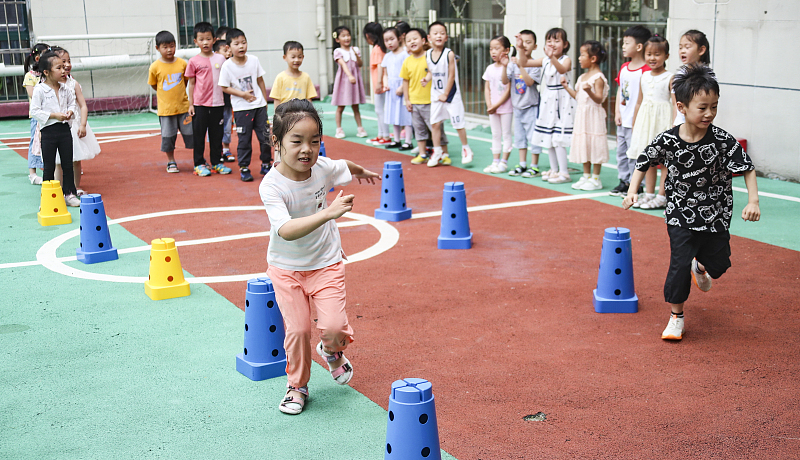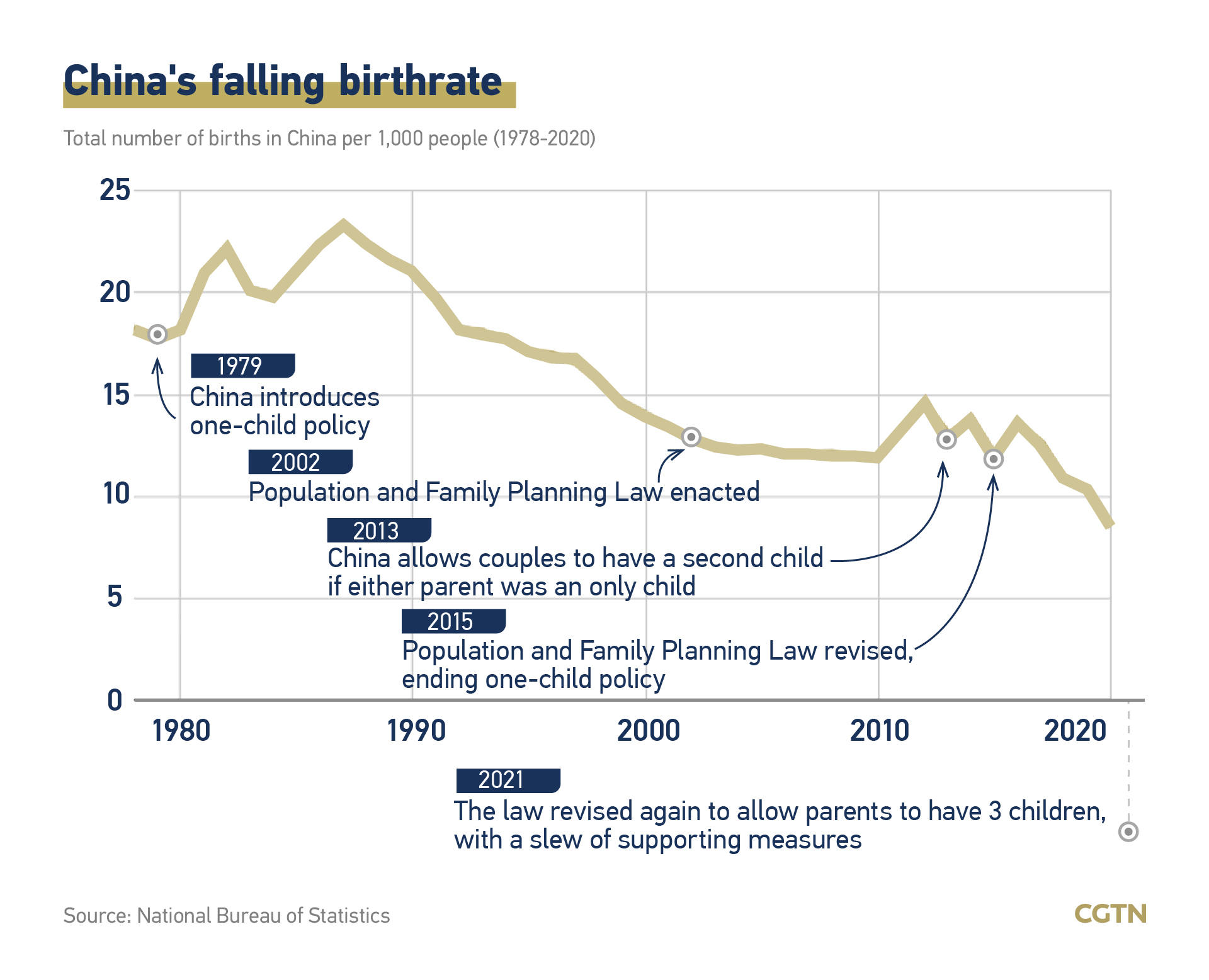
Children at a kindergarten in Huai'an, Jiangsu Province, China, July 14, 2020. /CFP
Children at a kindergarten in Huai'an, Jiangsu Province, China, July 14, 2020. /CFP
The Chinese government issued a new guideline on Tuesday for expediting the establishment of a supporting system to boost the nation's birth and fertility rates, which have been going downward for years.
The guideline covers several areas including marriage, birth giving, child raising, education, housing, employment and healthcare to encourage people to have more children in a more fertility-friendly environment. The guideline comes after the country has revised its law on population and family planning with the three-child policy.
Seventeen departments including the National Health Commission, the National Development and Reform Commission and the Ministry of Education jointly released the guideline.
Per the guideline, China plans to establish about 10 national pediatric medical centers to improve access to high-quality medical resources.
It requires local authorities to improve policies on maternity leaves for employees, maternity insurance and stipend.

Moreover, housing policy will be improved for families with children. Government-subsidized rental housing will be further developed to mitigate housing problems of new urban residents and young people, and families with underage children will be prioritized in the distribution of public rental housing.
In addition, families having more than one child will enjoy preferential policies for purchasing and renting houses, allowing them to withdraw housing provident fund to pay house rent and raising the ceiling for housing loans for purchasing their first house.
The country will also enhance financial support, including tax cuts, for services and companies related to nursing.
According to the guideline, flexible working styles, such as working from home or diverse working hours, are also among the favorable policies that will help create a fertility-friendly employment environment.
In 2013, China allowed couples to have a second child if either parent was an only child amid a shrinking workforce and aging society. The policy shift to two children contributed to millions of newborns, but the overall birth rate still registered a downward trend.
In 2020, China recorded a fertility rate of 1.3 children per woman, below the 2.1 replacement rate required for a population to remain stable, according to the results of the seventh national population census released by the National Bureau of Statistics.

